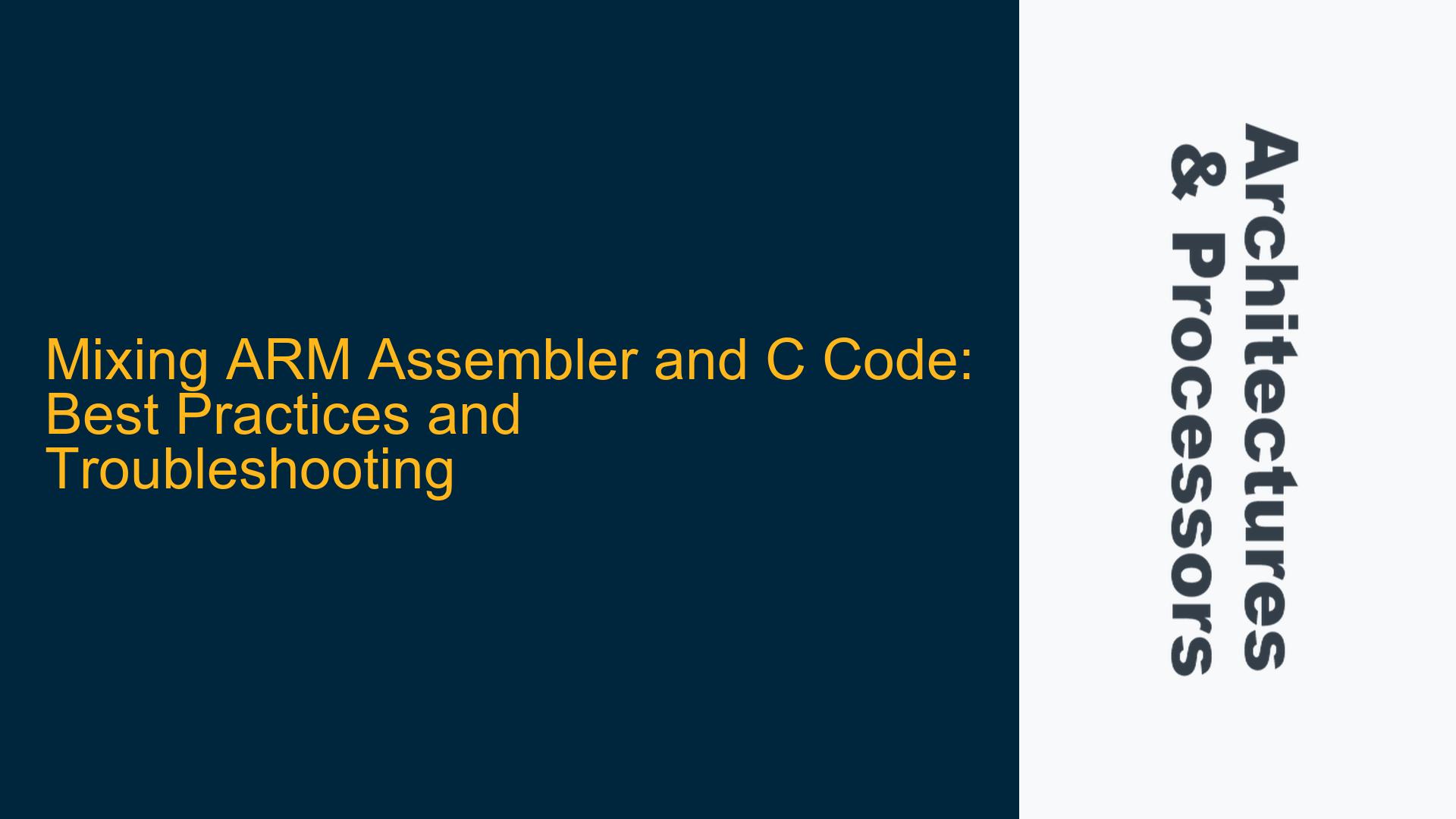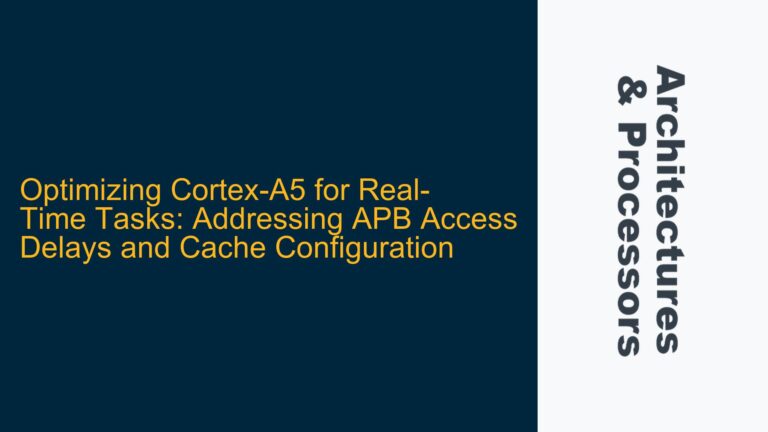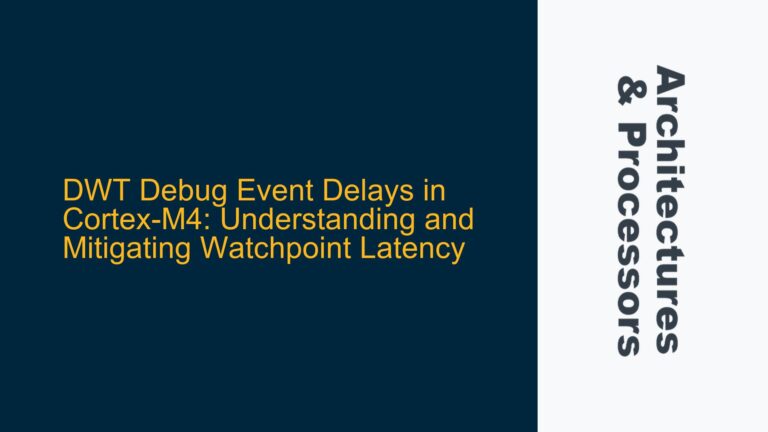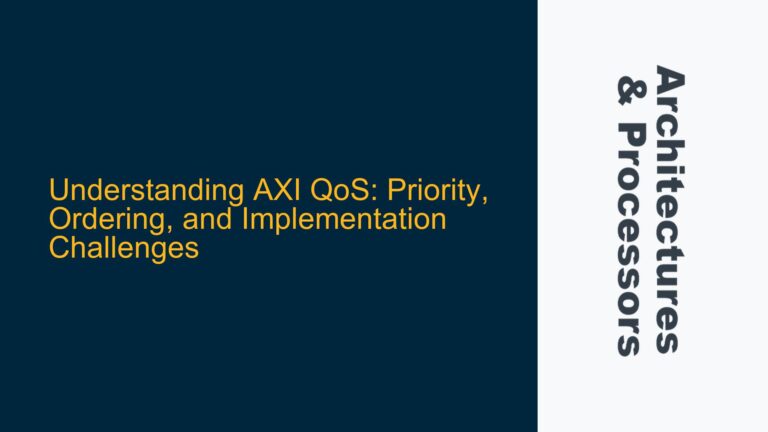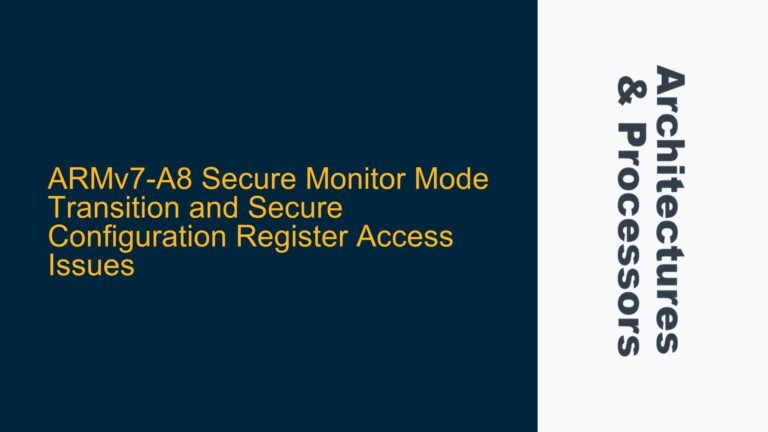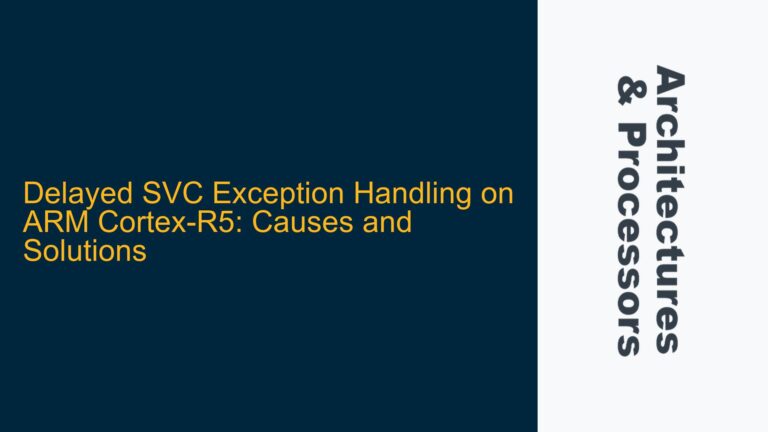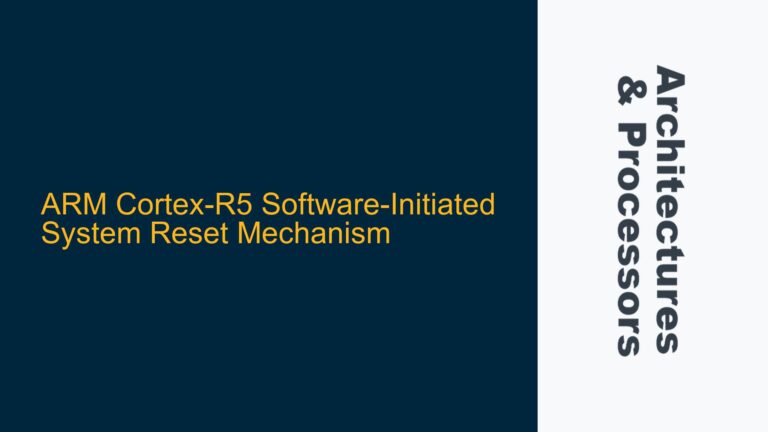ARM Cortex-M4 Cache Coherency Problems During DMA Transfers
When integrating ARM assembler and C code, especially in environments like Keil 4 and Keil 5, developers often encounter issues related to cache coherency, particularly during Direct Memory Access (DMA) transfers. The ARM Cortex-M4 processor, like many other ARM cores, utilizes a cache to speed up memory access. However, this can lead to coherency problems when DMA is involved, as the DMA controller accesses memory directly, bypassing the cache. This can result in stale data being read from the cache or outdated data being written to memory.
The primary issue arises when the CPU and DMA controller operate on the same memory region without proper synchronization. For instance, if the CPU writes data to a memory location that is cached, the DMA controller might read stale data from the main memory because the updated data is still in the cache. Conversely, if the DMA controller writes data to memory, the CPU might read outdated data from the cache. This lack of coherency can lead to subtle bugs that are difficult to diagnose and can cause system instability.
To address these issues, it is crucial to understand the ARM Cortex-M4 memory model and the mechanisms available for ensuring cache coherency. The ARM architecture provides several instructions and techniques for managing cache coherency, such as Data Synchronization Barriers (DSB), Data Memory Barriers (DMB), and cache maintenance operations like cache cleaning and invalidation. Proper use of these mechanisms is essential for ensuring that both the CPU and DMA controller operate on the most up-to-date data.
Memory Barrier Omission and Cache Invalidation Timing
One of the most common causes of cache coherency problems during DMA transfers is the omission of memory barriers and improper timing of cache invalidation. Memory barriers are instructions that enforce an ordering constraint on memory operations, ensuring that all memory accesses before the barrier are completed before any memory accesses after the barrier are executed. In the context of DMA transfers, memory barriers are necessary to ensure that the CPU and DMA controller see a consistent view of memory.
The ARM Cortex-M4 provides several types of memory barriers, including DSB and DMB. The DSB instruction ensures that all memory accesses before the barrier are completed before any subsequent instructions are executed. The DMB instruction ensures that memory accesses before the barrier are completed before any memory accesses after the barrier are executed. These instructions are crucial for maintaining cache coherency during DMA transfers.
Another common issue is the improper timing of cache invalidation. Cache invalidation is the process of marking cache lines as invalid, forcing the CPU to fetch the latest data from main memory. In the context of DMA transfers, cache invalidation is necessary when the DMA controller writes data to memory, ensuring that the CPU does not read stale data from the cache. However, if cache invalidation is performed too early or too late, it can lead to coherency problems.
For example, if cache invalidation is performed before the DMA transfer is complete, the CPU might read stale data from the cache. Conversely, if cache invalidation is performed too late, the CPU might read outdated data from the cache before the invalidation takes effect. Proper timing of cache invalidation is essential for ensuring that the CPU and DMA controller operate on the most up-to-date data.
Implementing Data Synchronization Barriers and Cache Management
To address cache coherency problems during DMA transfers, developers must implement proper data synchronization barriers and cache management techniques. The following steps outline a comprehensive approach to ensuring cache coherency in ARM Cortex-M4 systems:
-
Data Synchronization Barriers (DSB): Use DSB instructions to ensure that all memory accesses before the barrier are completed before any subsequent instructions are executed. This is particularly important when the CPU writes data to memory that will be accessed by the DMA controller. By inserting a DSB instruction after the write operation, developers can ensure that the DMA controller sees the updated data.
-
Data Memory Barriers (DMB): Use DMB instructions to ensure that memory accesses before the barrier are completed before any memory accesses after the barrier are executed. This is important when the CPU and DMA controller operate on the same memory region. By inserting a DMB instruction between the CPU and DMA memory accesses, developers can ensure that both the CPU and DMA controller see a consistent view of memory.
-
Cache Cleaning and Invalidation: Implement cache cleaning and invalidation operations to ensure that the CPU and DMA controller operate on the most up-to-date data. Cache cleaning is the process of writing dirty cache lines back to main memory, ensuring that the DMA controller sees the latest data. Cache invalidation is the process of marking cache lines as invalid, forcing the CPU to fetch the latest data from main memory.
- Cache Cleaning: Perform cache cleaning before starting a DMA transfer if the CPU has written data to memory that will be accessed by the DMA controller. This ensures that the DMA controller sees the updated data.
- Cache Invalidation: Perform cache invalidation after a DMA transfer if the DMA controller has written data to memory that will be accessed by the CPU. This ensures that the CPU does not read stale data from the cache.
-
Proper Timing of Cache Operations: Ensure that cache cleaning and invalidation operations are performed at the correct time. Cache cleaning should be performed before starting a DMA transfer, and cache invalidation should be performed after the DMA transfer is complete. This ensures that both the CPU and DMA controller operate on the most up-to-date data.
-
Use of DMA Buffer Alignment and Size: Ensure that DMA buffers are properly aligned and sized to match the cache line size. This reduces the risk of cache coherency problems by minimizing the number of cache lines that need to be cleaned or invalidated. Proper alignment and sizing also improve DMA transfer efficiency.
-
Testing and Validation: Thoroughly test and validate the system to ensure that cache coherency is maintained during DMA transfers. Use debugging tools and techniques to monitor cache behavior and identify any coherency issues. This includes using hardware breakpoints, watchpoints, and trace tools to monitor memory accesses and cache operations.
By following these steps, developers can ensure that cache coherency is maintained during DMA transfers in ARM Cortex-M4 systems. Proper use of data synchronization barriers, cache management techniques, and thorough testing are essential for preventing subtle bugs and ensuring system stability.
In conclusion, mixing ARM assembler and C code in environments like Keil 4 and Keil 5 requires careful attention to cache coherency, especially during DMA transfers. By understanding the ARM Cortex-M4 memory model, implementing proper data synchronization barriers, and managing cache operations effectively, developers can avoid common pitfalls and ensure reliable system performance.
